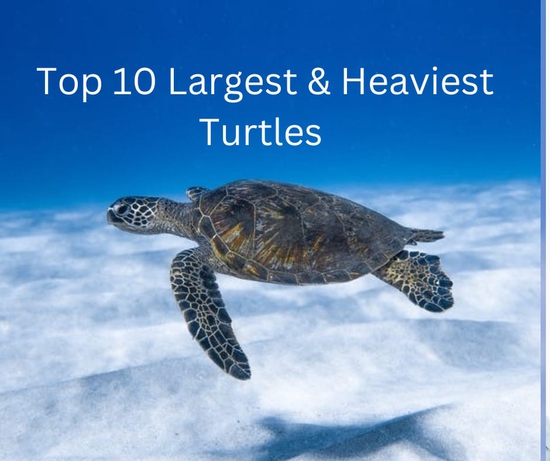
Top 10 Largest & Heaviest Turtles
Top 10 Largest & Heaviest Turtles
1. Leatherback sea turtle (Dermochelys coriacea)
2. Green sea turtle (Chelonia mydas)
3. Loggerhead sea turtle (Caretta caretta)
4. Alligator snapping turtle (Macrochelys temminckii)
5. Arrau turtle (Podocnemis expansa)
6. Aldabra giant tortoise (Aldabrachelys gigantea)
7. Galapagos giant tortoise (Chelonoidis nigra)
8. Indian Ocean giant tortoise (Aldabrachelys abrupta)
9. Yangtze giant softshell turtle (Rafetus swinhoei)
10. Spiny turtle (Heosemys spinosa)
1. Leatherback sea turtle (Dermochelys coriacea)
The leatherback sea turtle (Dermochelys coriacea) is the largest living turtle species and one of the most unique in appearance.
Here are some details about this fascinating creature:
Size: Leatherbacks can reach lengths of up to 2 meters (6.6 feet) and weigh as much as 700 kg (1,500 pounds). They have a streamlined body shape that helps them swim efficiently in the open ocean.
Appearance: Leatherbacks have a unique look compared to other turtle species. They lack a hard, bony shell and instead have a leathery skin that is covered in tough, flexible plates that resemble armor. These plates, known as "dermal bones," are made of tiny, overlapping bones that are covered in a thick layer of connective tissue. The turtle's back and sides are black or dark brown, while the underside is white or pale pink.
Habitat: Leatherbacks can be found in all of the world's oceans, from the tropics to the subarctic. They are highly migratory and can travel thousands of kilometers each year to find suitable breeding and feeding grounds.
Diet: Leatherbacks are carnivores and feed almost exclusively on jellyfish. They have special adaptations in their throat and digestive system that allow them to swallow large, gelatinous prey without getting stung by the jellyfish's tentacles.
Threats: Leatherbacks face a number of threats in the wild, including habitat loss, hunting, accidental capture in fishing gear, and ingestion of plastic pollution. Climate change is also a significant threat, as rising temperatures can disrupt nesting patterns and affect the turtles' food sources.
Conservation status: Leatherbacks are listed as "Vulnerable" by the International Union for Conservation of Nature (IUCN), which means they are at high risk of extinction in the wild. Conservation efforts include protecting nesting beaches, reducing accidental capture in fishing gear, and raising awareness about the importance of reducing plastic pollution in the ocean.

2. Green sea turtle (Chelonia mydas)
The green sea turtle (Chelonia mydas) is a large sea turtle species found in tropical and subtropical waters around the world.
Here are some details about this amazing creature:
Size: Green sea turtles can grow up to 1.5 meters (5 feet) in length and weigh up to 200 kg (440 pounds). Males are usually smaller than females.
Appearance: Green sea turtles have a hard, bony shell that is typically brown or black in color. Their skin and shell are covered in a pattern of light and dark markings, which helps them camouflage in the water. Juvenile green sea turtles have a darker coloration than adults. As adults, they have a smooth, streamlined shell with a slightly serrated edge.
Habitat: Green sea turtles are found in warm, shallow waters near the coast, including coral reefs and seagrass beds. They are known to migrate long distances between nesting and feeding grounds.
Diet: Green sea turtles are herbivores and feed primarily on seagrass, algae, and other marine plants. They have specialized jaws and teeth that help them tear through tough vegetation.
Threats: Green sea turtles face a variety of threats, including habitat loss, hunting for their meat and eggs, accidental capture in fishing gear, and ingestion of plastic pollution. Climate change is also a significant threat, as it can affect the turtles' nesting patterns and food sources.
Conservation status: Green sea turtles are listed as "Endangered" by the International Union for Conservation of Nature (IUCN). Conservation efforts include protecting nesting beaches, reducing hunting and accidental capture, and raising awareness about the importance of reducing plastic pollution in the ocean. The species is also protected by international treaties and laws.
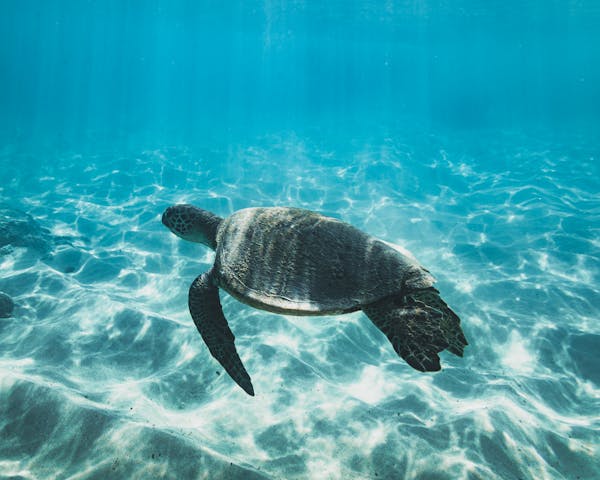
3. Loggerhead sea turtle (Caretta caretta)
The loggerhead sea turtle (Caretta caretta) is a large sea turtle species found in temperate and tropical waters around the world.
Here are some details about this remarkable creature:
Size: Loggerheads can reach lengths of up to 1 meter (3.3 feet) and weigh up to 150 kg (330 pounds). Females are typically larger than males.
Appearance: Loggerheads have a large, bony shell that is reddish-brown in color. Their head and neck are also large and reddish-brown, and they have powerful jaws with a beak-like structure that helps them crush hard-shelled prey. Their skin is covered in scales and their flippers have claws.
Habitat: Loggerheads are found in a variety of coastal and oceanic habitats, including coral reefs, seagrass beds, and sandy beaches. They are known to migrate long distances between feeding and nesting grounds.
Diet: Loggerheads are omnivores and feed on a wide variety of prey, including crabs, clams, jellyfish, and other invertebrates. They are also known to eat fish and even carrion.
Threats: Loggerheads face a number of threats, including habitat loss, hunting for their meat and eggs, accidental capture in fishing gear, ingestion of plastic pollution, and climate change. They are also vulnerable to habitat degradation and destruction due to coastal development.
Conservation status: Loggerheads are listed as "Vulnerable" by the International Union for Conservation of Nature (IUCN). Conservation efforts include protecting nesting beaches, reducing hunting and accidental capture, and raising awareness about the importance of reducing plastic pollution in the ocean. The species is also protected by international treaties and laws.
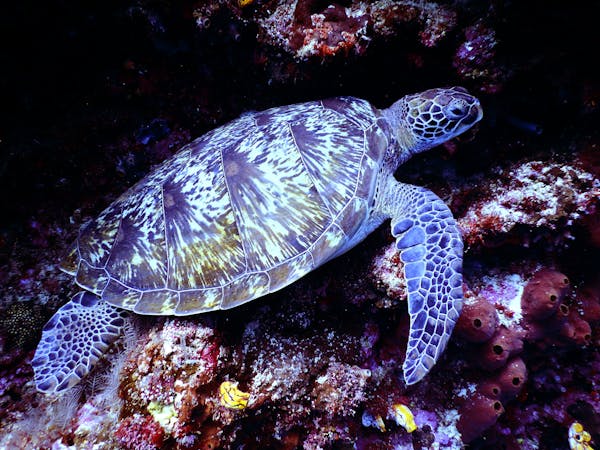
4. Alligator snapping turtle (Macrochelys temminckii)
The alligator snapping turtle (Macrochelys temminckii) is a large freshwater turtle species found in the southeastern United States.
Here are some details about this fascinating creature:
Size: Alligator snapping turtles are one of the largest freshwater turtles in the world, with males reaching lengths of up to 80 cm (31 inches) and weighing up to 100 kg (220 pounds). Females are usually smaller than males.
Appearance: Alligator snapping turtles have a large, muscular body and a dark brown or black shell with ridges and bumps that resemble the rough texture of an alligator's skin. Their head is large and triangular, with a beak-like jaw that can deliver a powerful bite. Their skin is covered in rough, scaly plates, and they have a long, pointed tail.
Habitat: Alligator snapping turtles are found in rivers, lakes, and other freshwater habitats with slow-moving or still water, such as swamps and marshes. They are most commonly found in the southeastern United States, from Texas to Florida.
Diet: Alligator snapping turtles are opportunistic predators and feed on a variety of prey, including fish, crustaceans, and other turtles. They are known for their unique hunting strategy, in which they open their mouth and lure prey with a worm-like appendage on their tongue, then snap their jaws shut with incredible force.
Threats: Alligator snapping turtles face a variety of threats, including habitat loss and degradation, hunting for their meat and shells, accidental capture in fishing gear, and collection for the pet trade. They are also vulnerable to pollution and disease.
Conservation status: Alligator snapping turtles are listed as "Threatened" by the United States Fish and Wildlife Service (USFWS) and are considered a species of conservation concern. Conservation efforts include habitat protection and restoration, reducing hunting and accidental capture, and raising awareness about the importance of conserving this species.
5. Arrau turtle (Podocnemis expansa)
The Arrau turtle (Podocnemis expansa), also known as the South American river turtle, is a large freshwater turtle species found in the rivers and lakes of South America.
Here are some details about this amazing creature:
Size: Arrau turtles can grow up to 80 cm (31 inches) in length and weigh up to 50 kg (110 pounds), making them one of the largest freshwater turtle species in South America.
Appearance: Arrau turtles have a large, flattened shell that is usually brown or black in color. Their head and limbs are also large and powerful, with claws on their front feet. They have a long, pointed snout and small eyes positioned high on their head, which allows them to breathe while submerged.
Habitat: Arrau turtles are found in a variety of freshwater habitats, including rivers, lakes, and lagoons. They are known to migrate long distances between nesting and feeding grounds.
Diet: Arrau turtles are omnivores and feed on a wide variety of prey, including plants, fish, and invertebrates.
Threats: Arrau turtles face a variety of threats, including habitat loss and degradation, hunting for their meat and eggs, accidental capture in fishing gear, and collection for the pet trade. They are also vulnerable to pollution and disease.
Conservation status: Arrau turtles are listed as "Vulnerable" by the International Union for Conservation of Nature (IUCN). Conservation efforts include protecting nesting beaches, reducing hunting and accidental capture, and raising awareness about the importance of conserving this species. The species is also protected by international treaties and laws.
6. Aldabra giant tortoise (Aldabrachelys gigantea)
The Aldabra giant tortoise (Aldabrachelys gigantea) is a species of giant tortoise found only on the Aldabra Atoll in the Seychelles.
Here are some details about this fascinating species:
Size: Aldabra giant tortoises are one of the largest tortoise species in the world, with adults reaching lengths of up to 1.3 m (4.3 ft) and weights of up to 400 kg (880 lbs).
Appearance: Aldabra giant tortoises have a large, domed shell that is usually dark brown or gray in color. Their skin is thick and wrinkled, and their limbs are short and powerful. They have a long neck and a beak-like mouth, which they use to grasp vegetation.
Habitat: Aldabra giant tortoises are found only on the Aldabra Atoll in the Seychelles, where they inhabit a variety of habitats, including coastal dunes, scrubland, and mangrove swamps.
Diet: Aldabra giant tortoises are herbivores and feed on a variety of vegetation, including grasses, leaves, and fruits.
Threats: Aldabra giant tortoises face a variety of threats, including habitat loss and degradation, hunting for their meat and shells, and invasive species introduced to the island, such as rats and cats, which prey on their eggs and young.
Conservation status: Aldabra giant tortoises are listed as "Vulnerable" by the International Union for Conservation of Nature (IUCN). Conservation efforts include protecting their habitat, controlling invasive species, and captive breeding programs. The species is also protected by national laws and international treaties.
7. Galapagos giant tortoise (Chelonoidis nigra)
The Galapagos giant tortoise (Chelonoidis nigra) is a species of giant tortoise found exclusively in the Galapagos Islands, located off the coast of Ecuador.
Here are some details about this iconic species:
Size: Galapagos giant tortoises are one of the largest tortoise species in the world, with adults reaching lengths of up to 1.8 m (5.9 ft) and weights of up to 400 kg (880 lbs).
Appearance: Galapagos giant tortoises have a large, domed shell that is usually dark brown or black in color. Their skin is thick and wrinkled, and their limbs are short and powerful. They have a long neck and a beak-like mouth, which they use to grasp vegetation.
Habitat: Galapagos giant tortoises are found exclusively on the Galapagos Islands, where they inhabit a variety of habitats, including grasslands, shrublands, and forests.
Diet: Galapagos giant tortoises are herbivores and feed on a variety of vegetation, including grasses, cacti, and fruits.
Threats: Galapagos giant tortoises have faced a variety of threats over the years, including hunting by humans, habitat loss and degradation, and introduced species such as rats and goats, which compete with tortoises for food and trample their nests. Today, the main threats facing Galapagos giant tortoises are climate change and invasive species.
Conservation status: The Galapagos giant tortoise is listed as "Vulnerable" by the International Union for Conservation of Nature (IUCN). Conservation efforts include habitat restoration, captive breeding programs, and the control and eradication of invasive species on the islands. The species is also protected by national laws and international treaties.
8. Indian Ocean giant tortoise (Aldabrachelys abrupta)
The Indian Ocean giant tortoise (Aldabrachelys abrupta) is a species of giant tortoise that was once found on several islands in the Indian Ocean, but is now believed to be extinct.
Here are some details about this extinct species:
Size: Indian Ocean giant tortoises were one of the largest tortoise species in the world, with adults reaching lengths of up to 1.3 m (4.3 ft) and weights of up to 275 kg (606 lbs).
Appearance: Indian Ocean giant tortoises had a large, domed shell that was usually dark brown or gray in color. Their skin was thick and wrinkled, and their limbs were short and powerful. They had a long neck and a beak-like mouth, which they used to grasp vegetation.
Habitat: Indian Ocean giant tortoises were found on several islands in the Indian Ocean, including the Seychelles, Mauritius, and Rodrigues.
Diet: Indian Ocean giant tortoises were herbivores and fed on a variety of vegetation, including grasses, leaves, and fruits.
Extinction: Indian Ocean giant tortoises are believed to be extinct due to a combination of factors, including hunting by humans, habitat loss and degradation, and introduced species such as rats and cats, which preyed on their eggs and young. The last known living specimen of the species died in 1840.
Conservation status: The Indian Ocean giant tortoise is considered to be extinct by the International Union for Conservation of Nature (IUCN). Efforts to conserve other giant tortoise species, such as the Aldabra giant tortoise and the Galapagos giant tortoise, focus on protecting their habitat, controlling invasive species, and captive breeding programs.
9. Yangtze giant softshell turtle (Rafetus swinhoei)
The Yangtze giant softshell turtle (Rafetus swinhoei) is a species of freshwater turtle that is critically endangered and among the rarest turtle species in the world.
Here are some details about this species:
Size: Yangtze giant softshell turtles are one of the largest freshwater turtle species in the world, with adults reaching lengths of up to 1.2 m (3.9 ft) and weights of up to 120 kg (265 lbs).
Appearance: Yangtze giant softshell turtles have a large, flat, soft shell that is usually gray or brown in color. Their skin is smooth and gray or brown in color. They have a broad head with a short, blunt snout and a pair of fleshy barbels on their chin.
Habitat: Yangtze giant softshell turtles are found in the Yangtze River and its tributaries in China and Vietnam.
Diet: Yangtze giant softshell turtles are carnivorous and feed on a variety of aquatic prey, including fish, crustaceans, and mollusks.
Threats: The main threats facing Yangtze giant softshell turtles are habitat loss and degradation, water pollution, and illegal hunting and trade for food and traditional medicine. The species is also vulnerable to accidental capture in fishing nets and drowning due to the construction of dams and other water management infrastructure.
Conservation status: The Yangtze giant softshell turtle is listed as "Critically Endangered" by the International Union for Conservation of Nature (IUCN). Conservation efforts include habitat restoration, captive breeding programs, and protection from hunting and trade. As of 2021, there are only four known living individuals of the species, two in Vietnam and two in China, and all of them are in captivity.
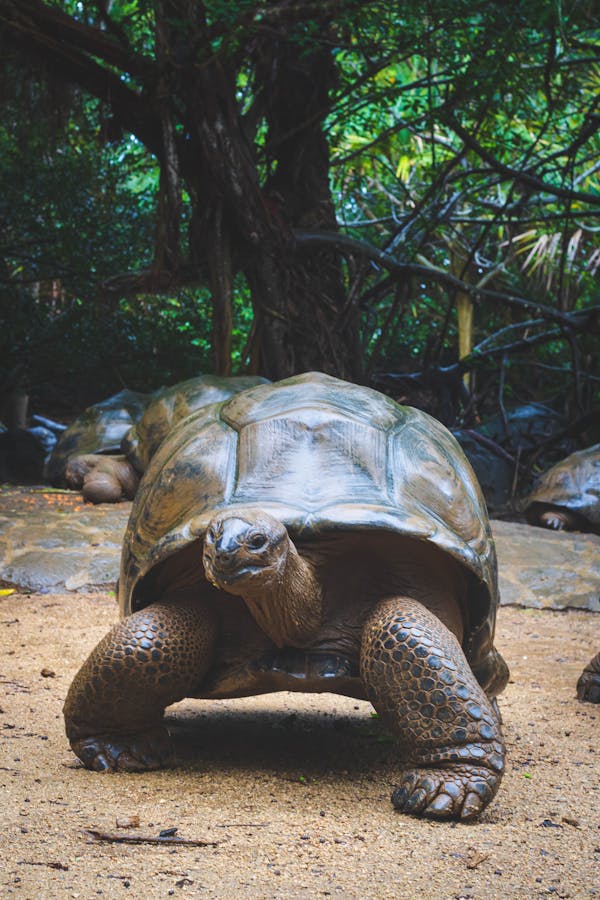
10. Spiny turtle (Heosemys spinosa)
The spiny turtle (Heosemys spinosa) is a species of freshwater turtle that is native to Southeast Asia.
Here are some details about this species:
Size: Spiny turtles are relatively small, with adults reaching lengths of up to 20 cm (8 in) and weights of up to 500 g (1.1 lbs).
Appearance: Spiny turtles have a distinctive appearance, with a brown or black shell that is covered in sharp, pointed spines. Their skin is dark brown or black, and they have a yellow or orange stripe running down each side of their head. They also have large, webbed feet that are adapted for swimming.
Habitat: Spiny turtles are found in a variety of freshwater habitats, including rivers, streams, and swamps, in Southeast Asia, including Thailand, Malaysia, Indonesia, and the Philippines.
Diet: Spiny turtles are omnivores and feed on a variety of prey, including insects, worms, snails, and aquatic plants.
Behavior: Spiny turtles are primarily aquatic and spend most of their time in the water. They are also good climbers and can often be found basking on rocks or logs.
Threats: The main threats facing spiny turtles are habitat loss and degradation due to deforestation, pollution, and agricultural development. The species is also vulnerable to overexploitation for food and traditional medicine and is listed on CITES Appendix II.
Conservation status: The spiny turtle is listed as "Vulnerable" by the International Union for Conservation of Nature (IUCN). Conservation efforts include habitat restoration and protection, as well as education and awareness campaigns to reduce overexploitation.
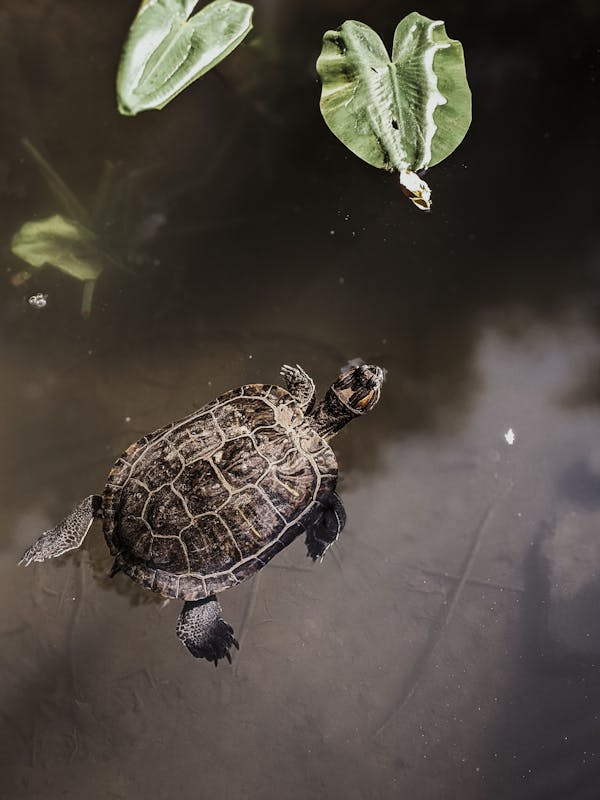
Blog Upload on - March 14, 2023
Views - 4574

posted By -
Animals Super Store
Related Posts
-
8 Things You Should Never Do To Your Dog
March 27, 2023 -
Gaushala In Uttar Pradesh
Aug. 14, 2022 -
Use Of Goat Milk
Nov. 1, 2022 -
Healthy Habits For Animals
Oct. 26, 2023 -
What are Sacrificial Rituals
April 20, 2022 -
 Top 10 Largest Snake In The World
Top 10 Largest Snake In The World
March 2, 2023 -
Major Diseases In Goats
March 3, 2023 -
Animal Behavior, Thoughts On Choosing A Breed To Raise
July 5, 2023


"I resonate with your passion for history and its lessons. Your connection between past crises and today's challenges is insightful. Your call to action for sustainable farming practices is crucial. As we navigate feeding a growing population, Farming Plan offers valuable insights on climate-smart agriculture. Let's join the fight to shape a better future!"